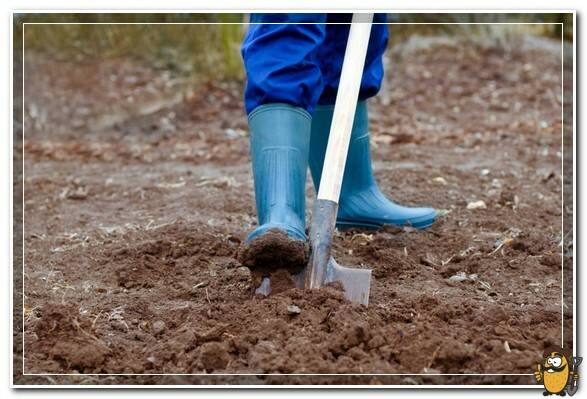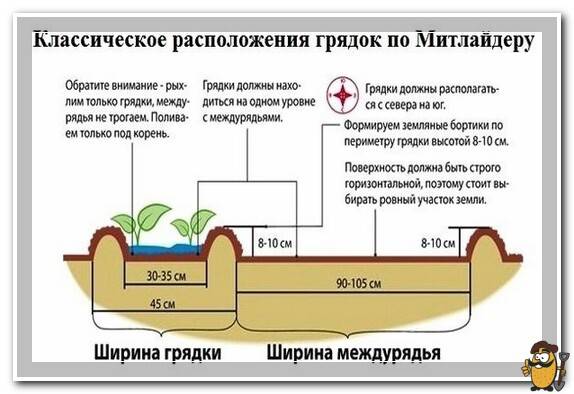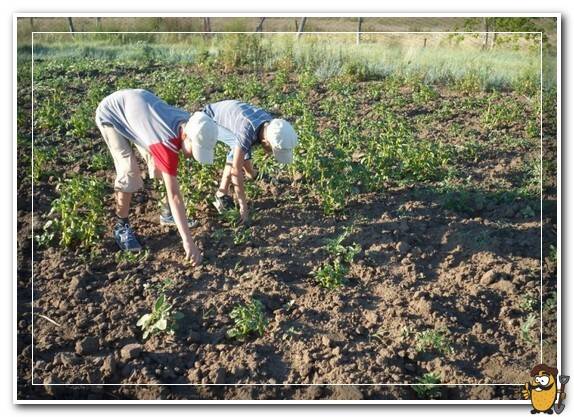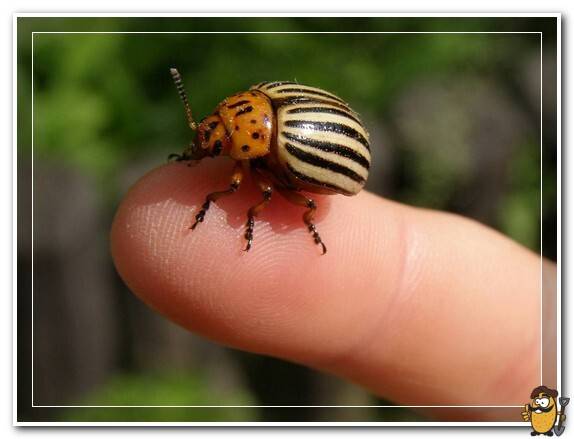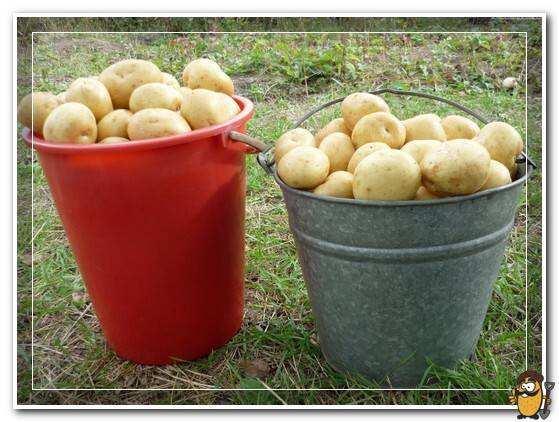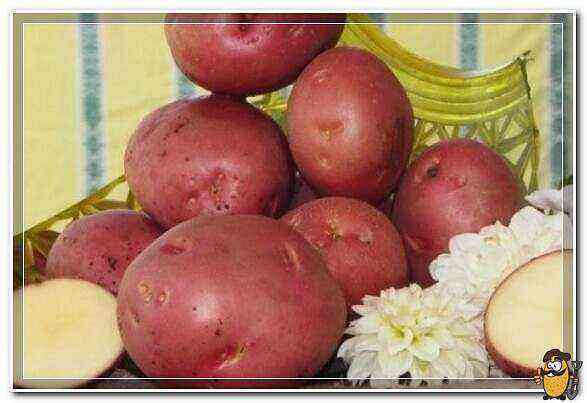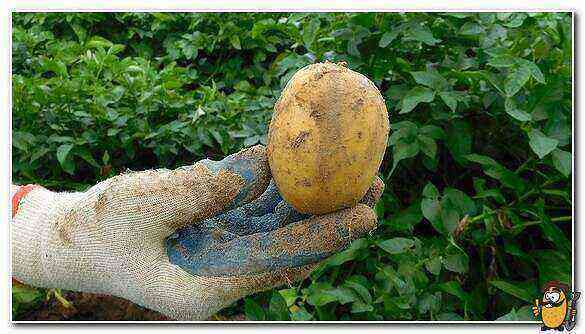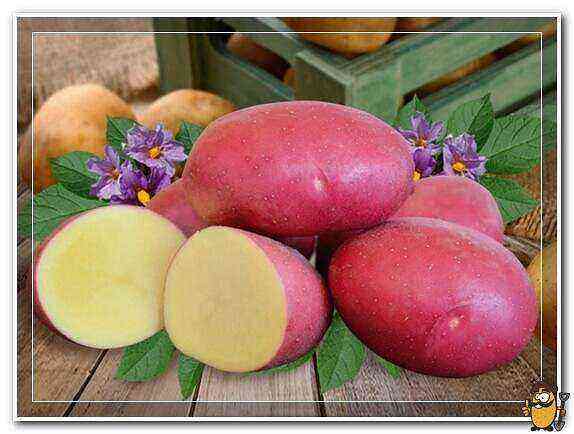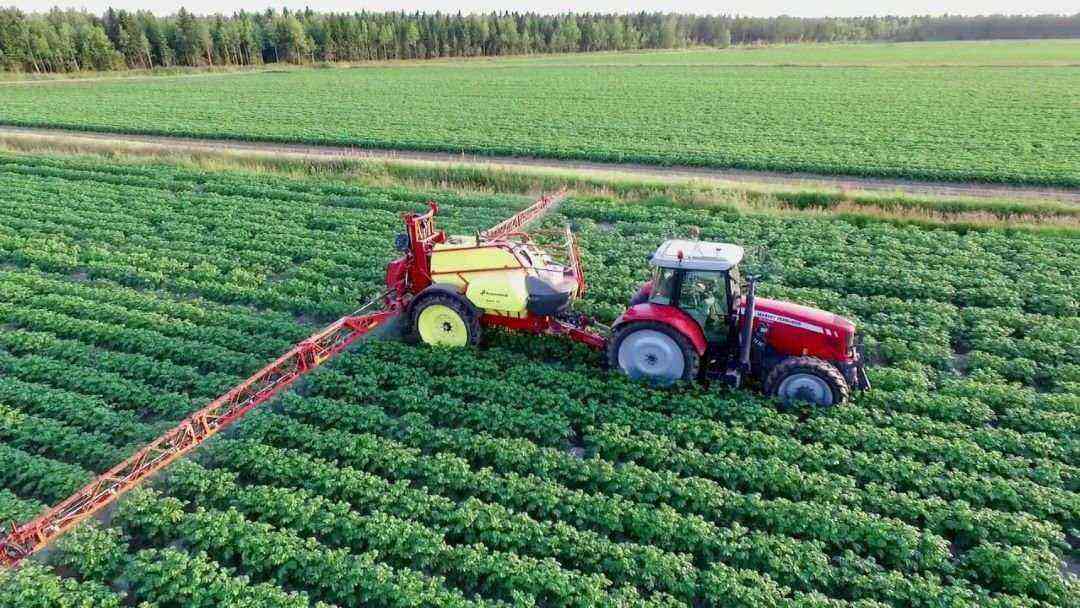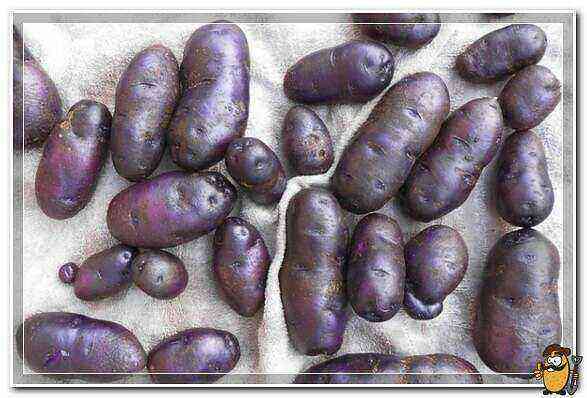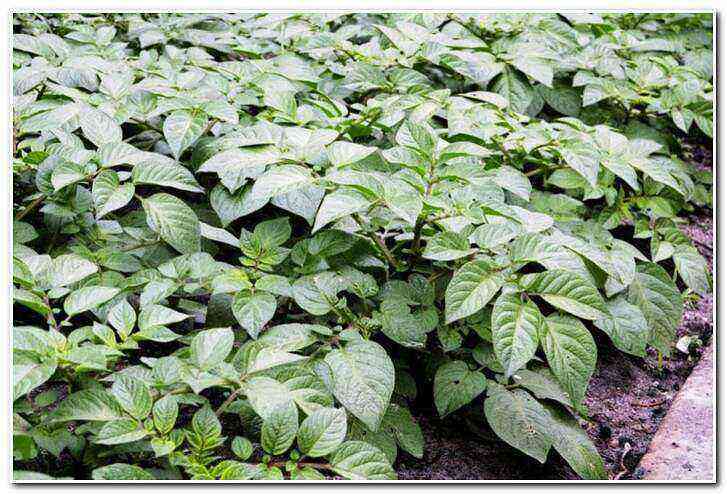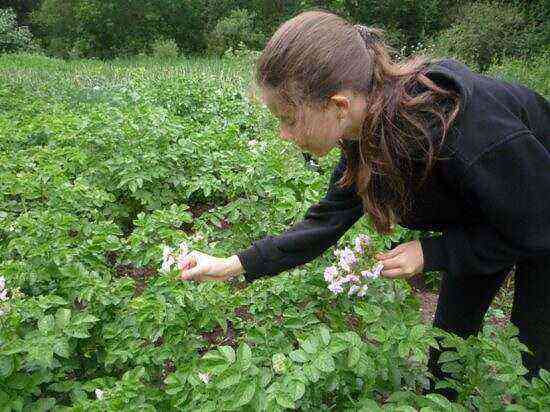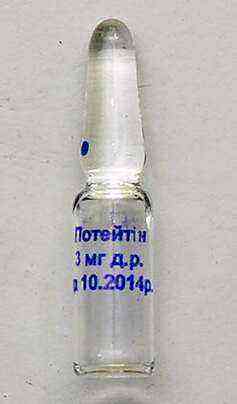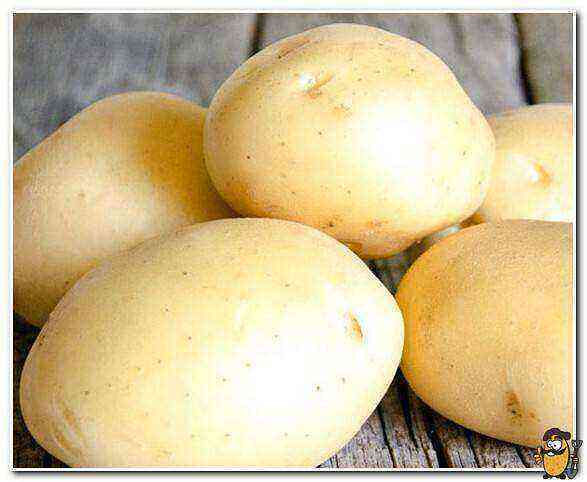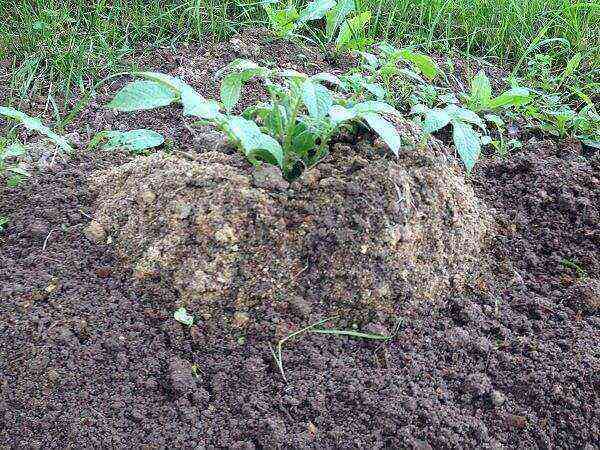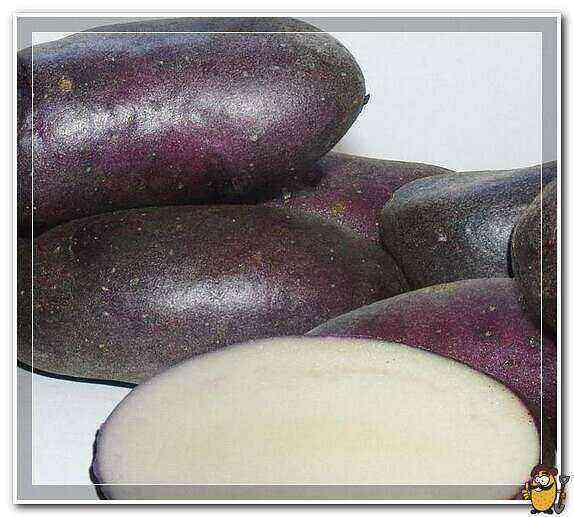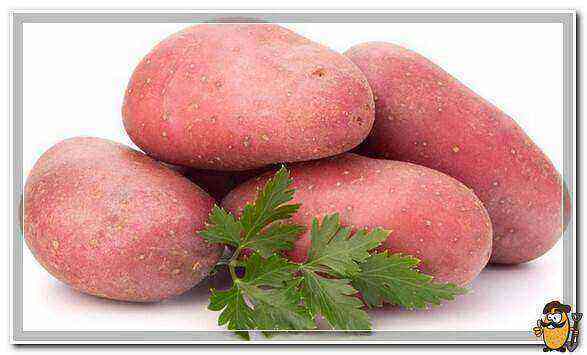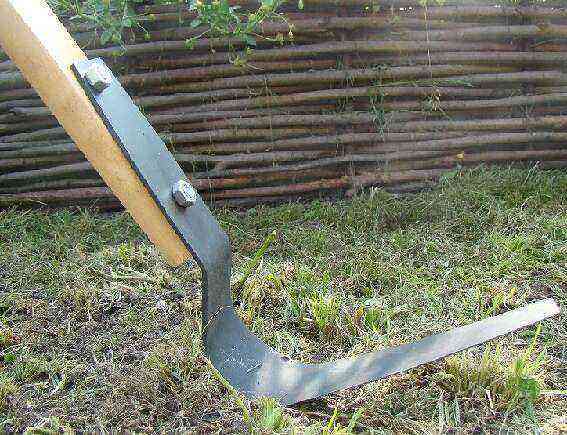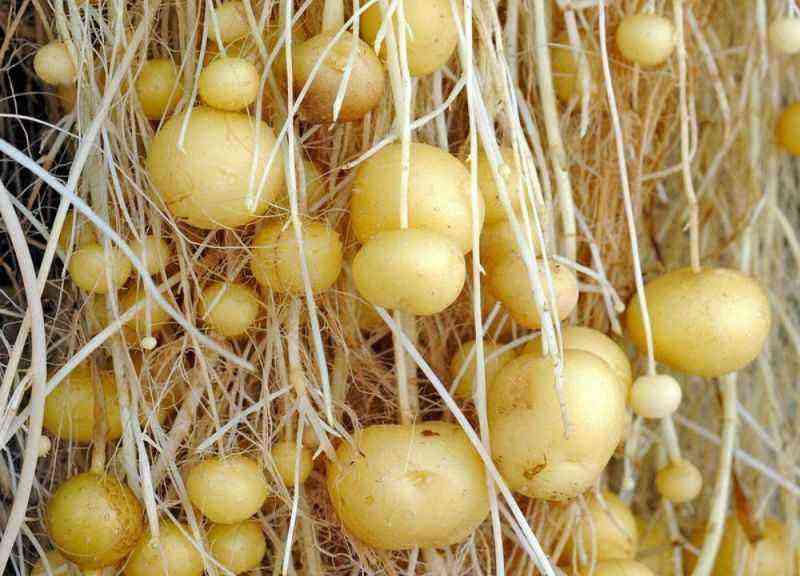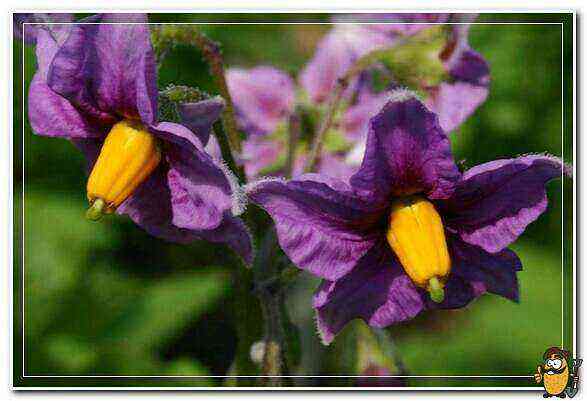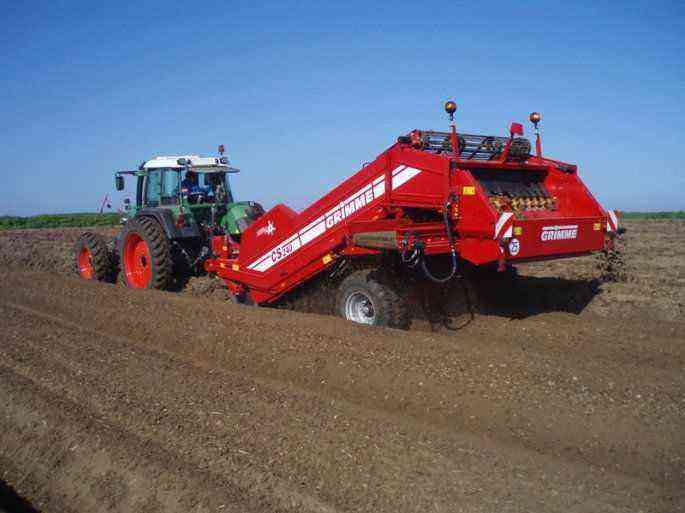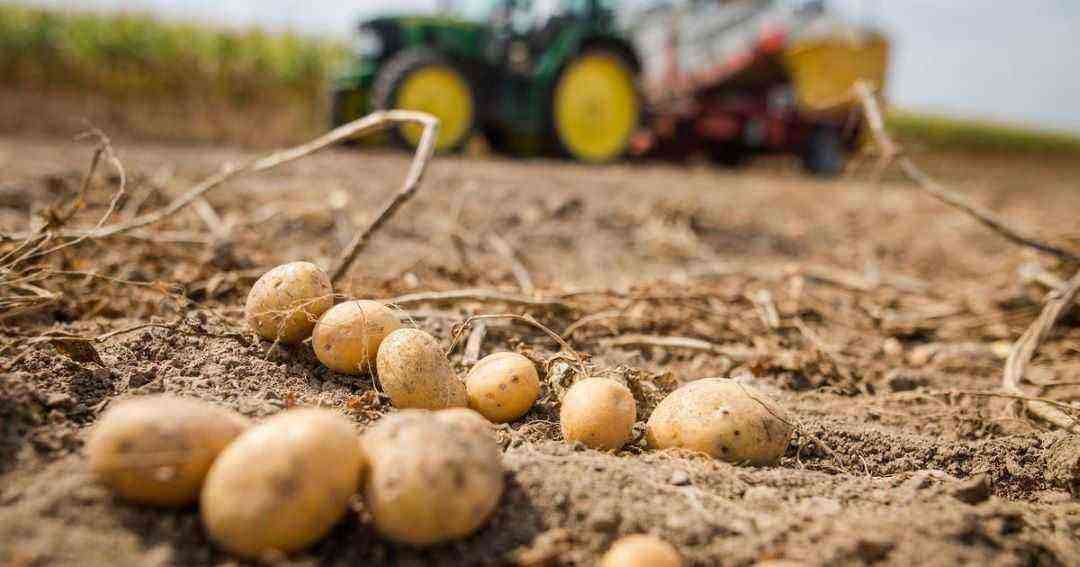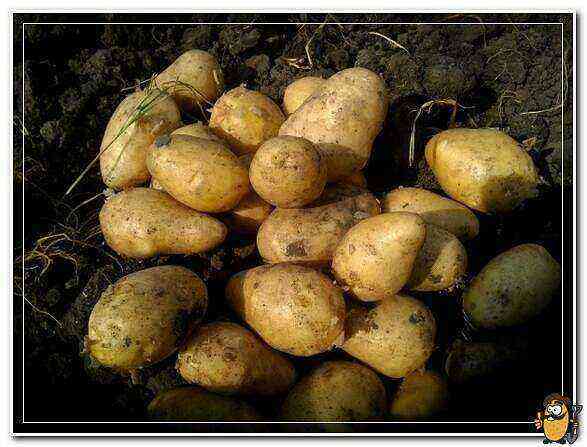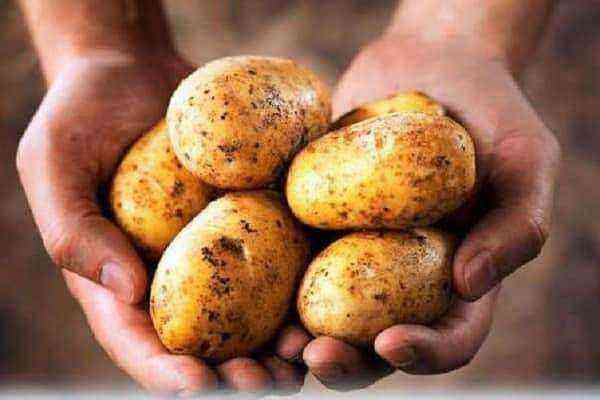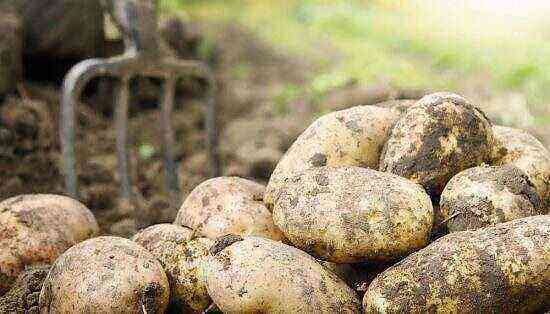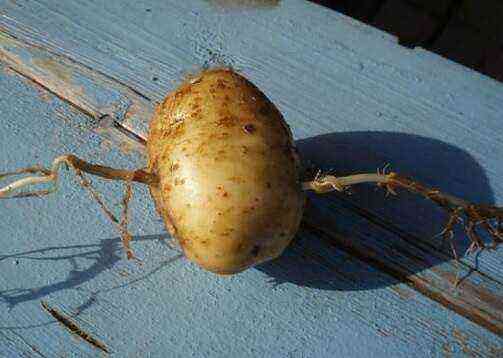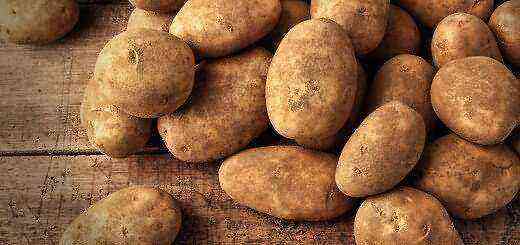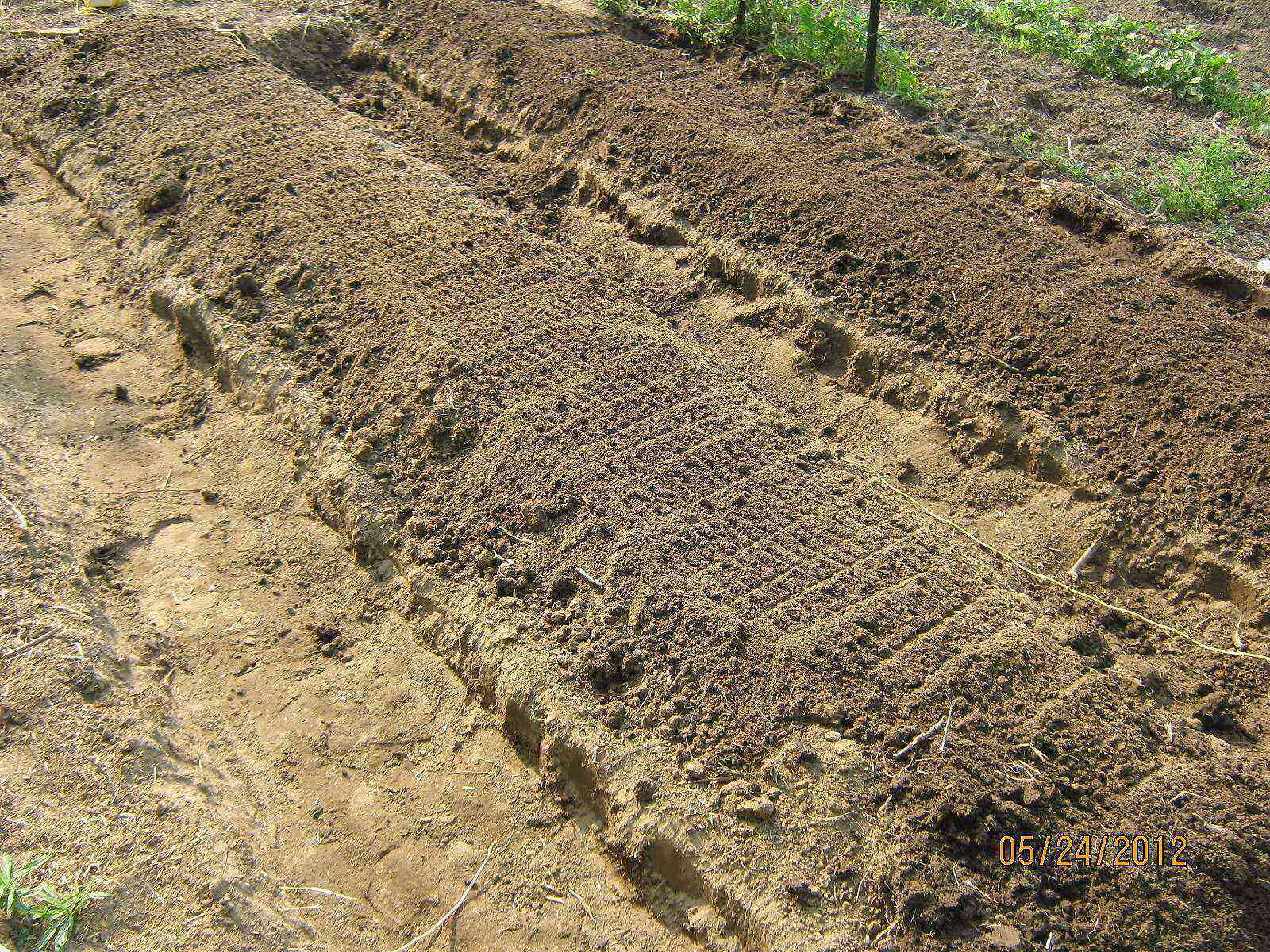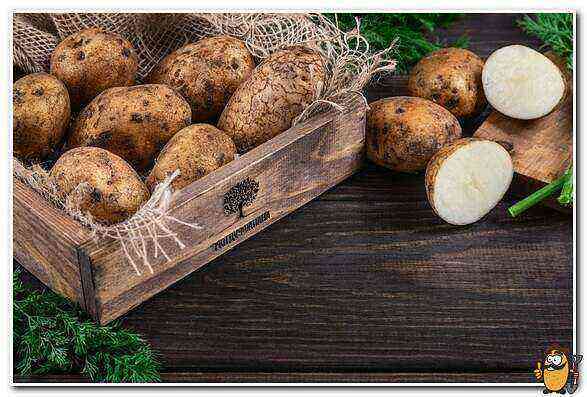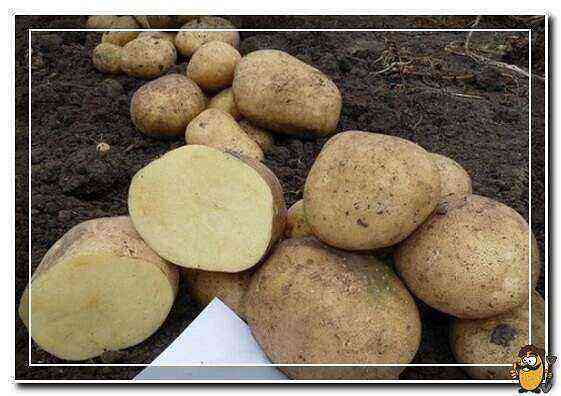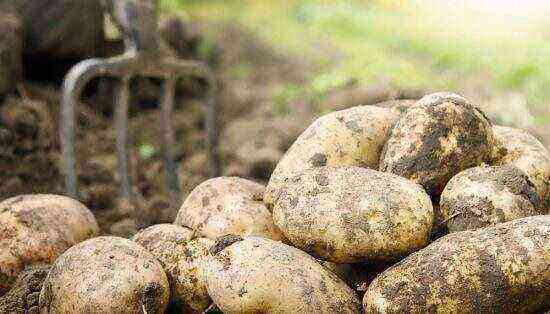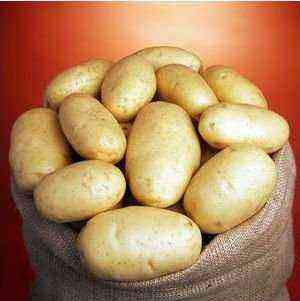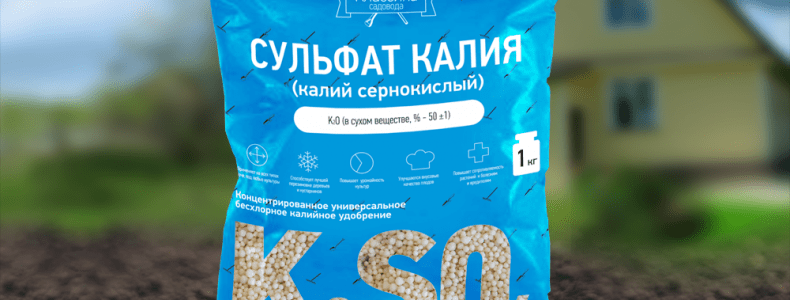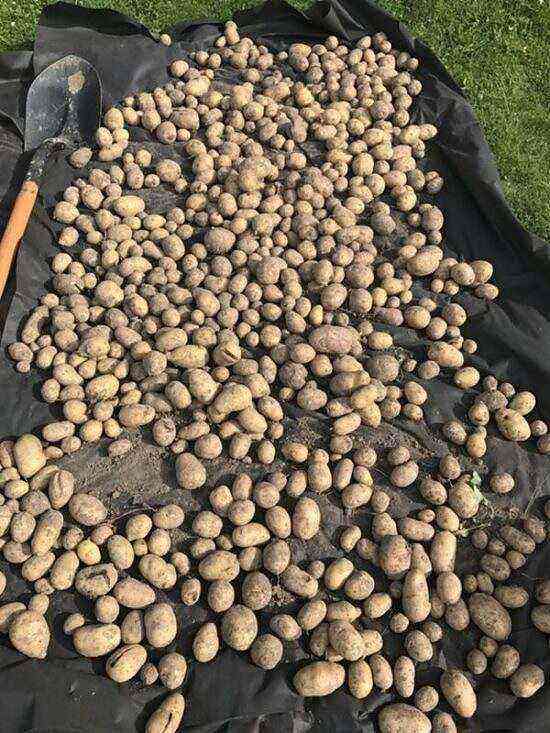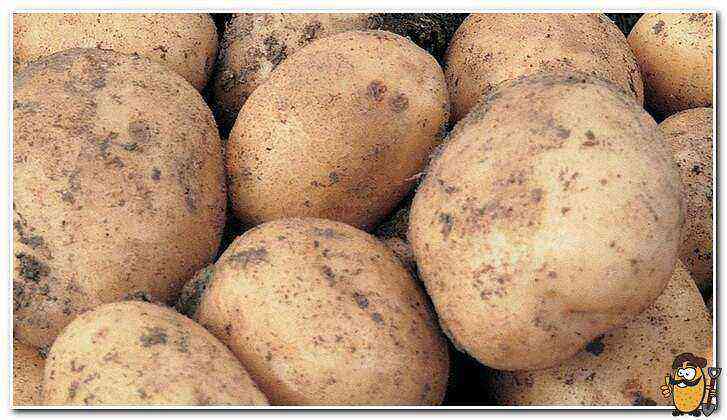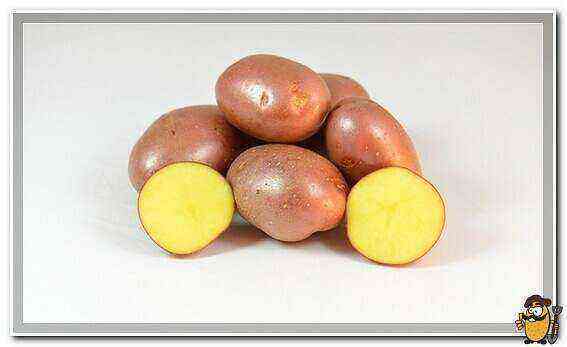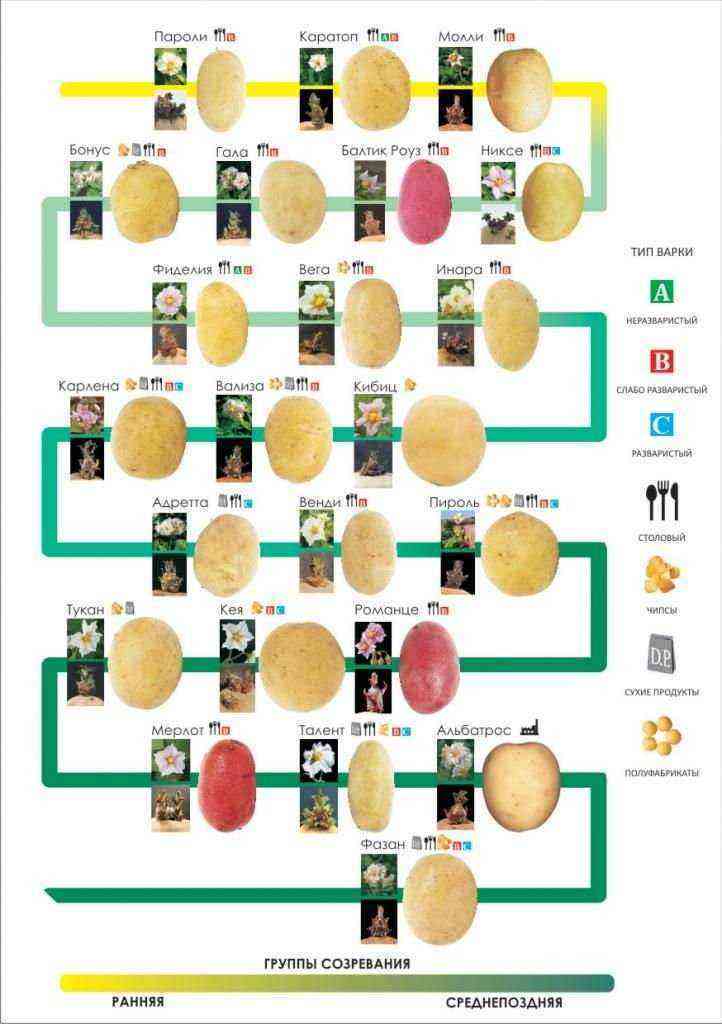Gala potato variety: characteristics, cultivation features. The rapid development of vegetable breeding has led to the emergence of a large number of hybrid potato varieties. Thanks to this, gardeners have the opportunity to plant several types of root crops on their plots at once in order to appreciate them and choose the best one. The main assessment criteria are yield, resistance to diseases and pests, ripening times, soil requirements. Many varieties can boast of high rates for all the listed characteristics, so it is sometimes difficult for farmers to make a choice.
But when the Gala potato variety appears in the garden, the issue is resolved by itself. This masterpiece of German selection has become very popular in our country due to its high yield, early maturity, undemanding conditions, good immunity to infections and parasites, and resistance to sudden temperature changes. It rightfully takes its place in the top ten varieties cultivated on the territory of the Russian Federation.
Main characteristics
Gala is an early ripe table variety bred by German breeders from Norika GmbH. The cultivation of this culture is a real treat for the gardener. Everyone wants to quickly get a large and high-quality harvest, and Gala is just one of those few varieties that are able to fully satisfy this desire. Its main advantage is early ripening. Already 70-80 days after planting, a technically mature crop is harvested. Only the weather can affect this feature. If the summer is cold, the ripening period increases, but not more than a week.
The bushes of the Gala variety are tall and spreading, they can bend to the very surface of the earth. Leaves are rich green, with a slightly wavy edge. During the flowering period, large white flowers appear on the plants, transforming the potato beds into a beautiful “snowy field”.
One bush gives up to 20 potatoes weighing 80-130 g. With proper cultivation, observing all the rules of agricultural technology, with the obligatory consideration of climatic conditions, up to 1 centners of excellent potatoes can be harvested from 700 hectare.
The color of the tubers is mixed – yellow with beige, the peel is of medium thickness, the shape is round, sometimes slightly oblong. The eyes are few, located at the very surface. The flesh of this potato can take on a different shade (from pale yellow to rich yellow), depending on whether the weather was like during the growing season, dry or damp.
It is believed that varieties with yellow tubers are of little use in culinary terms. Say, dishes made from such potatoes do not look very aesthetically pleasing. Gala refutes this common misconception. Tubers retain their original shade, do not fall apart in boiling water, do not turn into porridge in a pan or oven. Experts rated the taste of this variety at 9 points out of a possible 10, which is a very high indicator. In addition, due to the relatively low starch content (up to 13%), Gala potatoes can be consumed by people who are prescribed a diet. This is a useful product, because it contains many substances necessary for a person, such as protein, carotene, vitamin C and others.
Another significant advantage of this variety is its good preservation. On average, keeping quality is 90%. Under optimal conditions, potatoes retain their flavor and appearance until the next season. Also, the advantages include the “plasticity” of a given culture, adaptability to different climates, soil, and so on. It can be successfully grown in many regions of the Russian Federation. The unpretentiousness of the variety greatly facilitates the work of caring for it.
Peculiarities of growing
Site preparation and planting material
Like most other varieties, Gala gives the maximum yield on light sandy loam, loam and forest gray soils, which have good air and moisture permeability. If the site is located in a swampy area, the soil on it is heavy (clay, peaty), you can try to remedy the situation by adding sand, but the yield will still be lower. Regardless of the type of soil for the winter, it is recommended to plant mustard leaves, rapeseed, alfalfa or other green manure crops in order to loosen the soil, saturate it with nitrogen.
Before planting, the area for potatoes is dug onto a shovel bayonet with the simultaneous introduction of compost or rotted manure. Digging can be carried out in the fall. In this case, in the spring, you will only need to loosen the top layer (break up large lumps).
Small potatoes weighing 70-80 g are selected for planting. They are taken out of storage in about a month and kept in a bright room at a temperature of 12-15 degrees. During this time, the tubers will turn a little green and release thick, strong sprouts up to 2 cm long. Those who want to get fast shoots germinate planting tubers in a humid environment (constantly humidified humus, peat) at a temperature of 14-16 degrees. In such conditions, not only strong, healthy sprouts appear on potatoes, but also small roots. In the process of preparing the planting material, it is advisable to treat it with an effective fungicide: a solution of copper sulfate, Bordeaux liquid, the drug Oleocobrite, Kuprozan or any of their analogs. The treatment will help protect the plants from Rhizoctonia disease, the disease most commonly affected by the Gala potato variety.
If the harvest of the previous season did not have a potato suitable for planting in size, large potatoes are used. They are cut into 2 or more parts, trying to leave at least two eyes on each. To avoid decay of the cut planting material, the sections are sprinkled with wood ash or chalk, ground into powder.
Landing options
Planting of the Gala variety is usually carried out in the last days of April, provided that the soil has warmed up to 7-8 degrees and night frosts are no longer expected. The classical planting scheme involves the embedding of planting tubers into prepared furrows, the distance between which is about half a meter. The recommended planting depth is 8-10 cm. Experienced potato growers add ash, onion husks, humus to the holes.
If the plot is small and there is a need to save space, the sprouted tubers are planted in the ground in a checkerboard pattern with a distance between the holes no more than 35 cm.This method allows you to plant almost twice as many plants, but caring for thickened zigzag rows will be problematic.
Another good option for this variety is planting along the Meatlider, which allows you to get a rich potato crop from a relatively small area. Its peculiarity lies in the landing pattern:
- double narrow beds (width – 30-35 cm);
- the aisles between the beds are wide, up to one meter;
- the holes in the beds are staggered at a distance of 30 cm from one another.
As practice has shown, the Meatlider method has two fat pluses. First, the wide aisles between the rows make it much easier to care for the potatoes. Secondly, the yield is 10-15% higher than with the standard planting method. The higher yield is due to the fact that the plants receive more sunlight, almost 100% use the applied fertilizers and water after irrigation.
Garden bed care
It is important to have time to huddle young plants twice before the tops close. The first hilling is carried out when the stems reach a height of 10 cm, the second – after 2-3 weeks. During the first hilling, ridges up to 30 cm in height are formed, weeding is carried out in parallel, carefully removing the weeds.
Gala potatoes respond well to watering. This variety has a weak root system, which has to “feed” both the lush green mass and the growing tubers, so it needs a lot of moisture. In other words, the beds should not be allowed to dry out. They begin to water them after the seedlings rise about 5 cm above the ground. During this period, each plant will need at least 3 liters of water, and so that it does not go in vain, it is poured directly into the middle of the bush. The frequency of watering depends on the weather conditions: on hot days – every 3-5 days, in cloudy weather – once every one and a half weeks. During flowering, the watering rate increases to 6-8 liters per bush. They stop moistening potato beds about 2 weeks before the planned harvest.
For a short growing season, Gala potatoes require only 2 or 3 additional fertilizing. At the first hilling, you can add ammonium nitrate or urea (nitrogen fertilizers), at the second – a solution of superphosphate or azophoska, in the last days of June – a complex feed (for example, superphosphate + potassium sulfate). For those who do not want to grow potatoes “on chemistry”, it is recommended to carry out 2 dressings per season with infusion of chicken manure, mullein or nettle. The first is diluted with water in a ratio of 1:15, the rest – 1:10. Any of the listed fertilizers should be infused for at least 3-4 days. When applying liquid dressings, avoid contact with plant leaves. If this happens, it is advisable to immediately wash off the fertilizer with water.
Fighting diseases and pests
Gala variety is highly resistant to potato crayfish and all types of nematodes, including golden nematodes. Planting can affect rhizoctonia, to which the immunity of this potato is weak, so more attention must be paid to the prevention of this disease.
As for insect pests, the most to be feared, of course, is the Colorado potato beetle. Its larvae are able to devour the green mass in just a few days, leaving only the stems in the garden and thereby reducing the yield by half, or even several times. They fight the Colorado potato beetle in different ways. Some prefer to spray the bushes with special preparations, while others (owners of small plots) act in the old fashioned way – they collect insects and larvae by hand, and then destroy them outside the garden.
No less harm to Gala potatoes can be caused by the larvae of the wireworm (click beetle), which gnaw at the roots and make moves in the tubers. This enemy of potato growers differs from the Colorado potato beetle in that it acts in the ground, that is, it remains invisible, and therefore more dangerous. Experienced gardeners know that he loves acidic soils, therefore, for prevention purposes, dolomite flour is added, which neutralizes the increased acidity.
Cleaning and storage
Gala potatoes fully ripen in the first decade of August. Before harvesting it, gardeners mow the tops (10-15 days). Due to this, the peel on the tubers coarsens, which in turn increases their keeping quality. Immediately after harvesting or in its process, the dug out potatoes are dried in the shade, sorted (calibrated), diseased and mechanically damaged tubers are rejected, material is selected for planting for the next year. Then the harvested crop is sent to storage. Potatoes of the Gala variety, in fact, like all other varieties, should be stored in a dark, ventilated room with a constant air temperature of 2-3 degrees and a humidity of 70-80%. These are optimal conditions for this vegetable, under which 90% of the harvest “survives” until the spring of next year.
In conclusion
Our potato growers have liked the Gala variety since its appearance in the country. The explanation is simple. Very high yield, excellent taste, unpretentious care, adaptability to different types of soils, and most importantly – rapid maturation. Only two and a half months and you can dig. Such potatoes could not go unnoticed.

